Last-Minute NYC Holiday Gift Guide 🎁
We’ve created a holiday gift guide with presents for the intrepid New Yorker that should arrive just in time—


San Francisco boasts the largest Chinatown outside of Asia and the oldest Chinatown in North America. Since its establishment in 1848, Chinatown has played an influential role in the history and culture of San Francisco, drawing more tourists each year than San Francisco’s iconic Golden Gate Bridge.We enlisted the help of Ryan Russo, founder of Walk SF Tours to show us the history of Chinatown and the Chinese community in San Francisco. To truly understand Chinatown and its significance to San Francisco, we must look past the red lanterns and dragon sculptures, and delve into the history of the area and the people that live there.
The story Ryan tells of Chinatown is one of resilience. This neighborhood was once littered with drugs, territory wars, slavery, and prostitution. In the late 19th century, the Chinese suffered racial prejudice and San Francisco’s Chinatown, along with the rest of the country, sank into depression. In 1906, an earthquake destroyed much of San Francisco. During the rebuilding of the city that came after, the Chinese Consolidated Benevolent Association, established to help Chinese immigrants, had the vision to rebuild the neighborhood into the western friendly tourist attraction that stands today.
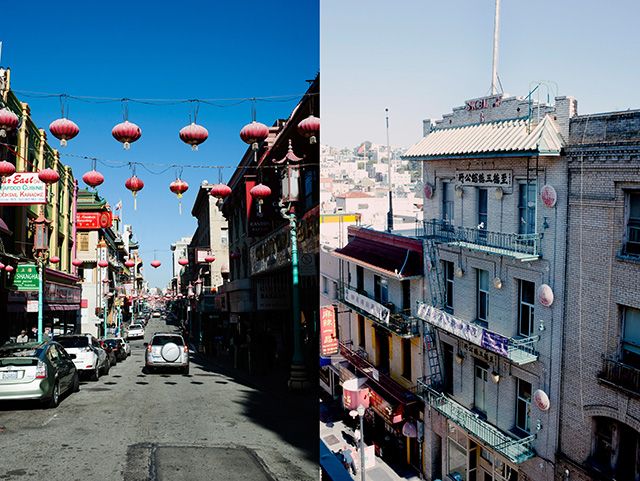
The first Chinese immigrants arrived in San Francisco in 1848. The following year, gold was discovered at Sutter’s Mill, creating an influx of immigration from the Guandong Province of China. Later, more immigrants arrived to work on the Transcontinental Railroad and the population in Chinatown continued to grow. Despite their educational and professional status at home, those who did not work on the railroad or mines had to take up low-paying jobs in factories or work as shopkeepers due to their limited English.
The Dragon Gate at Bush Street and Grant Avenue marks the entrance to Chinatown. Once inside the gate, a statue of Dr. Sun Yat-Sen sculpted by California-based artist Beniamino Bufano stands at St. Mary’s Square as a war memorial to Chinese war veterans.
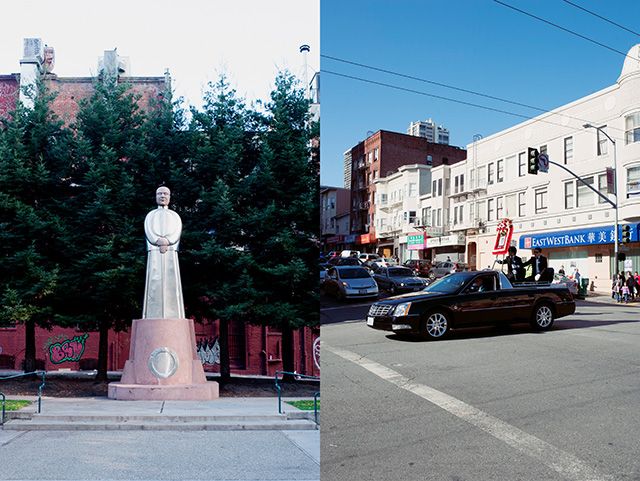
As we make our way down Grant Avenue, rows of red lanterns line the street in front of us. Above us, buildings show their Asian influence with bright colors, upturned eaves and ornate railing.
When the country sank into the Great Depression, racial tensions ran high and turned violent as Americans saw immigration as a threat to jobs at home. The anti-immigration sentiment became law when the government passed the Chinese Exclusion Act of 1882. It restricted immigration of one single ethnic group and greatly reduced the number of Chinese immigrants in the country. In response, the Consolidated Chinese Benevolent Association was formed to organize labor recruiting and provide the Chinese community with a unified voice to face the local government.
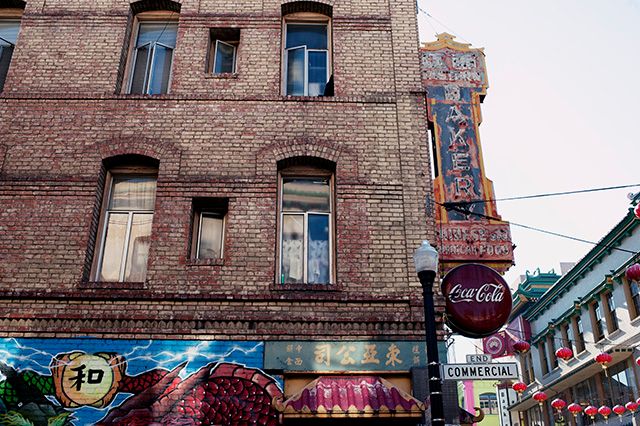
During this period, criminal activities overtook Chinatown. Tongs, underground societies of brotherhood, sprung up overnight and engaged in turf battles and criminal enterprises. During the height of their activities, tongs ran profitable gambling houses, brothels, opium dens, and slave trade. Tongs continued to terrorize the community for decades until the 1906 earthquake.
The earthquake leveled most of San Francisco. During the city’s rebuilding process, real-estate developers and city planners wanted to move Chinatown to the southern edge of San Francisco in order to claim the prime real estate downtown that Chinatown had occupied. But the Benevolent Associations rallied the Chinese government to convince the city government to reconsider.
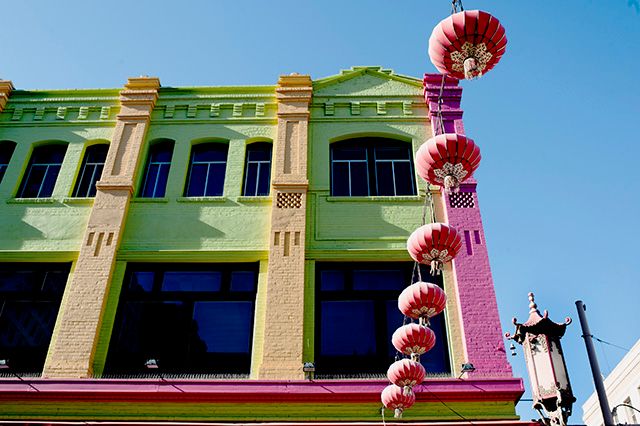
Today, there are two Chinatowns. One is a unique neighborhood defined by its people, history and culture. This heart of this Chinatown can be seen on weekends, with locals gathered in Portsmouth Square at the heart of Chinatown for Chinese chess and T’ai Chi. This Chinatown draws thousands of tourists to frequent its dim sum restaurants, temples, and souvenir shops.
But underneath the shine of tourism, there is another Chinatown that still reflects the struggles left by generations of discrimination. In modern day Chinatown, the hardship continues with substandard housing, unemployment, and health and safety problems in establishments. The neighborhood is now mainly inhabited by low-income families, the elderly, and monolingual immigrants. Chinatown is no longer the main residential area for the Chinese community as many have moved to Richmond and Sunset districts and the greater Bay Area.
Still, gestures are being made by the city. The San Francisco Planning Department has plans to redesign Chinatown’s Broadway Street in an effort to make the area more vibrant and livable, incorporating community input into the designs. The project involves the collaboration of the Chinatown Community Development Center, one of the interest groups advocating for better quality of life for San Francisco’s low-income residents. In 2013, the American Planning Association named San Francisco’s Chinatown one of the neighborhoods in its 10 Great Places in America, citing its cultural capital, unique sense of place, community activism, planning milestones and overall sustainability. There’s clearly a lot of dynamic possibilities in Chinatown today, and with the right initiatives, perhaps it can be both a thriving tourist destination and livable community in the 21st century.
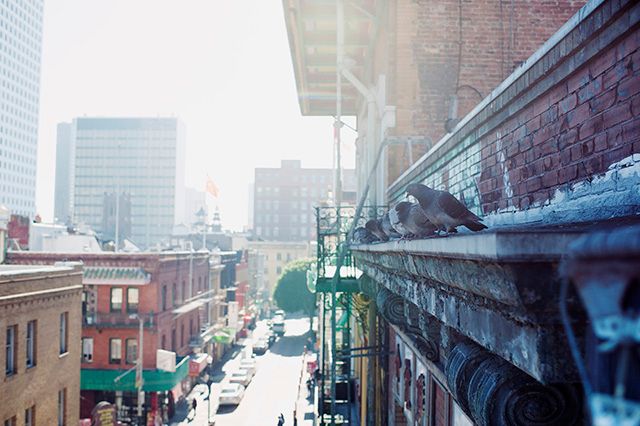
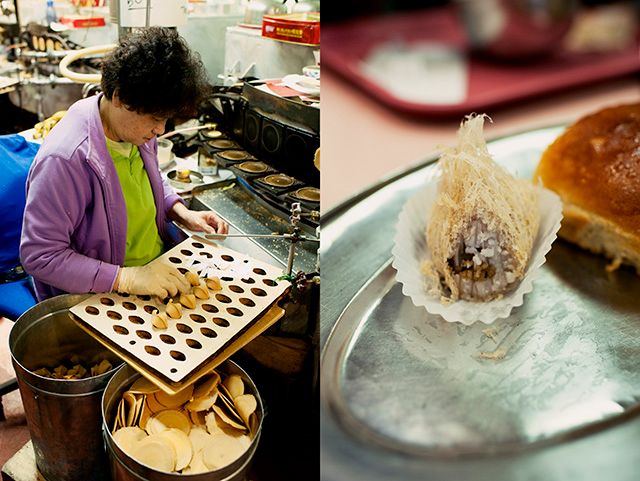
Tracy Zhang is a Chinese-Canadian photographer currently living in San Francisco. To see more of her work, subscriber to her blog Just-In-Time.
Subscribe to our newsletter